#jean baptiste bonnard
Photo


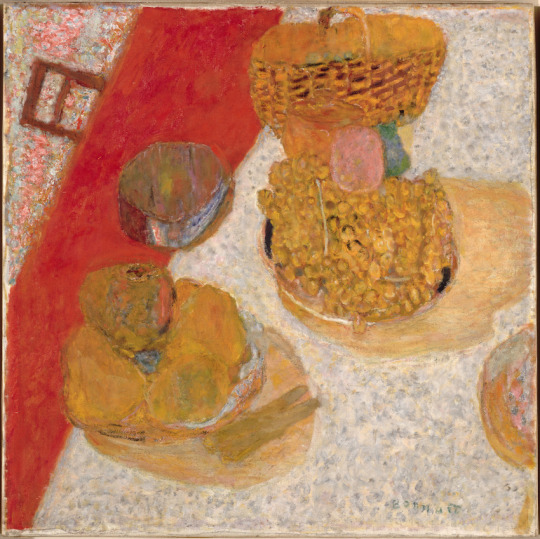
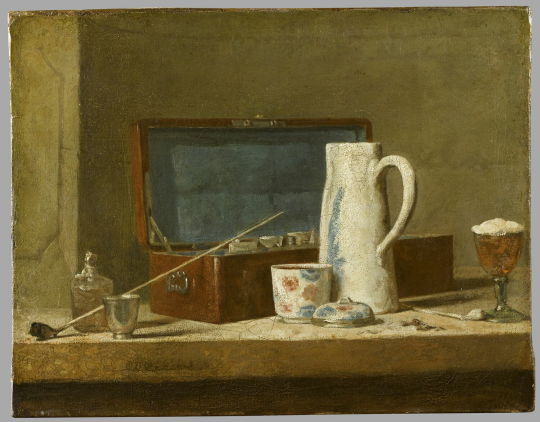
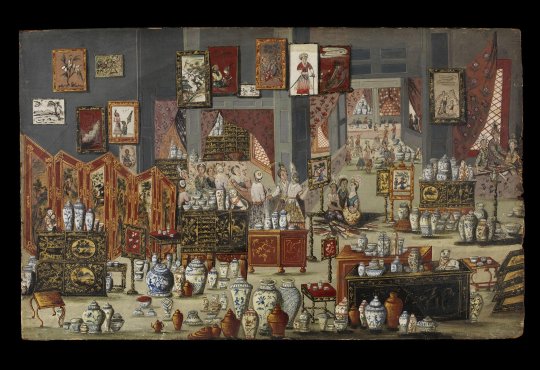



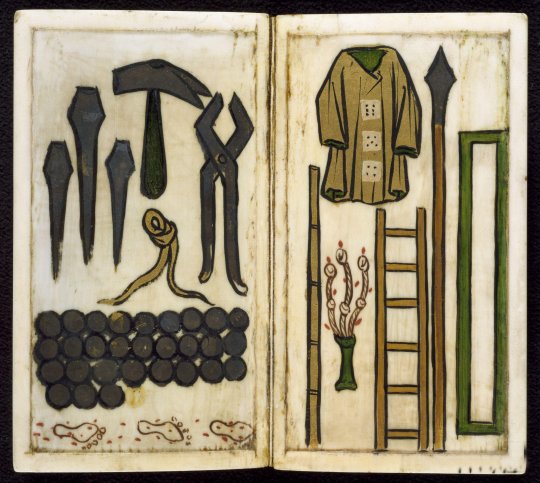
Some of the artworks featured in the exhibition Les Choses, at The Louvre (click for full picture)
Cartels de l’exposition pour ces œuvres :
- Pain et Figues, 50-79 de notre ère, peinture murale, Herculanum
Dans ce tableautin très simple, deux figues brunes et un pain doré renvoient à une grande frugalité, que la douceur des fruits, vantée par Pline l’Ancien dans son Histoire naturelle (an 77), tempère à peine. Et pour cause : il n’est pas question ici de susciter l’envie, la gourmandise, mais d’exprimer le contraire, un idéal de diète “philosophique”, dont Socrate (vers 470/469-399 avant notre ère), le mangeur de pain, est le parangon, lui qui critiquait les plus gloutons de ses contemporains. Dans leur dénuement, ces petites choses du quotidien ont leur morale sévère qui en impose.
- Schädel [Crâne], 1983, Gerhard Richter
Au début des années 1980, Richter est fasciné par le motif du crâne, qui lui offre de mettre à distance ses effets, de les canaliser, en inscrivant sa peinture dans la tradition. Il prend alors le contre-pied de la peinture néo-expressionniste allemande, spontanée, subjective, violente. Rien de tel ici, où le memento mori tend même à s’effacer derrière les moyens de la peinture : la géométrie impeccable, la rigueur minimale, le quasi-monochrome. Seule la lumière dégage la coquille renversée du crâne, et rappelle in fine le sens d’une vanité appliquée aux illusions et aux certitudes du siècle.
- Coin de table, 1934, Pierre Bonnard
Sur cette toile presque carrée, rien n’est facilement identifiable. Bonnard ne s’intéresse pas à la représentation mimétique des choses, mais à la beauté simple du quotidien et à ses sensations. Ce Coin de table est un prétexte à expérimenter les moyens de les exprimer : format et cadrage, vue en surplomb des objets, étirés, aplatis, ployés, fusionnés, jeu de la lumière qui émane de la matière picturale elle-même, travaillée d’une touche virtuose. Après Chardin, Bonnard fait encore de la nature morte le lien où se manifeste une magie énigmatique.
- Pipes et vases à boire, dit La Tabagie, vers 1737, Jean Siméon Chardin
Chardin a représenté une série d’objets qu’il possédait, de petites choses sans qualité extraordinaire, en particulier une tabagie de palissandre. La grande simplicité, l’équilibre de l’ensemble sont remarquables. Tout s’assemble, tout s’épanouit harmonieusement pour suggérer le charme de la vie telle qu’elle est, dans ses choses mêmes. Diderot prêtait une magie singulière à la peinture de Chardin. Cette Tabagie la contient, où agit le mystère de la présence des choses, comme des personnages de l’histoire, animées d’un mouvement et d’une lumière intérieure.
- Intérieur d’un magasin de porcelaines et d’objets chinois, 1680-1700, peintre anonyme néerlandais
Un anonyme néerlandais, fasciné comme nombre de ses contemporains par les objets de luxe asiatiques, s’est inspiré des représentations de cabinets de collectionneurs pour inventer une boutique imaginaire qui rassemble avec fantaisie et jubilation tous ces trésors tant convoités. L’artiste a peint cette chinoiserie sur une feuille d’éventail, lui-même un article de luxe décrivant les merveilles d’Orient et d’Extrême-Orient. Une fois mise au carré pour être encadrée, cette feuille est devenue à son tour un objet d’art européen ouvrant sur le vaste monde.
- Natura Morta, 1944, Giorgio Morandi
Cette nature morte est exemplaire de l’art de Morandi à traduire le mystère et la poésie des choses. L’artiste a élu des objets simples, ordinaires, qu’il collectionnait, et il les a mis en scène selon un dispositif réglé, avec une grande économie de moyens. Disposés en frise sur un fond neutre, de formes et de hauteurs différentes, peints dans des harmonies sourdes de blanc nacré rompues par la boule de hochet jaune et bleue, ils sont comme figés dans le temps, silencieux et secrets. Morandi les a ainsi rendus présents au monde d’une manière qui excède leur fonction, intrigants, voir obsédants.
- La Chambre de Van Gogh à Arles, 1889, Vincent Van Gogh
Pour Van Gogh, sa chambre de sa maison jaune, à Arles, devait être très simple et “vide”, comme un intérieur japonais. Il détestait les choses de la bourgeoisie, l’accumulation des bibelots, source de confusion mentale. Il lui fallait de l’ordre, et ce tableau devait créer les conditions du repos, une sorte d’asile de paix, avec juste les choses nécessaires, où calmer la tête et l’imagination. L’artiste devait tenir à cette projection mentale rassurante, qui le dépeint en creux : la première peinture de cette chambre (1888) ayant été endommagée, il la refit en effet deux fois (1889).
- Six coquillages sur une table de pierre, 1696, Adriaen Coorte
Une sorte de paradoxe gît dans cette petite composition, d’une infinie délicatesse, où ces quelques coquillages, presque insignifiants de prime abord, renvoient pourtant à la puissance de l’économie coloniale néerlandaise, fondée sur la Compagnie des Indes orientales depuis 1602. Tous, en effet, viennent des mers du Sud, rapportés par bateaux. Alors que le goût des curiosités se développait en Europe, au contact d’autres mondes, les tableautins de Coorte devaient être appréciés par des collectionneurs qui doublaient leurs précieux trésors de leurs représentations.
- Livret de dévotion, vers 1330-1340, ivoire polychrome et doré, Cologne
Ce double feuillet représentant les Arma Christi (les “Armes du Christ”) fait partie d’un petit livret de dévotion. Aux scènes de la Passion du Christ, qui y sont également représentées, sans texte, répondent les instruments de cette Passion, soigneusement inventoriés dans l’image : des trente deniers reçus par Judas pour prix de sa trahison au tombeau vide, en passant par le roseau et le fouet de la flagellation. Rien ne manque, excepté le Christ lui-même, absent, mais présent dans chacune de ces choses qui devaient faire récit, engager à la prière et à la méditation.
#art#still life#vincent van gogh#giorgio morandi#pierre bonnard#gerhard richter#jean-baptiste-siméon chardin#i really liked this exhibition#there was something very moving about it#very human#bibi#one of the first artworks in the exhibition is the 'pain et figues' one and it's also one of the oldest featured#and idk i got a little emotional seeing it
1 note
·
View note
Photo
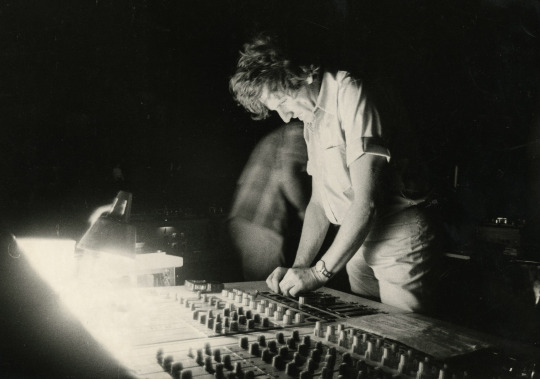
Xenakis révolution. Le bâtisseur du son, (documentary/biography, 2022, 56', in French w/ French, Italian, English, Spanish, and Polish sub, and German dubbed), Directed by Stéphane Ghez, Arte / Cinétévé, 2022. Feat. Mâkhi Xenakis, Pascal Dusapin, George Aperghis, Jean-Michel Jarre, Trio Xenakis/Collectif Xenakis [Adélaïde Ferrière, Emmanuel Jacquet, Rodolphe Théry, and Jean-Baptiste Bonnard, Othman Louati, Emmanuel Curt]
(image: Xenakis à Persepolis, 1971. Photo: © Mali Letrange / Coll. Famille I. Xenakis)
#art#music#architecture#documentary#film#video#photography#iannis xenakis#stéphane ghez#mâkhi xenakis#mali letrange#pascal dusapin#george aperghis#jean michel jarre#trio xenakis#collectif xenakis#adélaïde ferrière#emmanuel jacquet#rodolphe théry#jean baptiste bonnard#othman louati#emmanuel curt#vivian daval#denis gaubert#lionel delebarre#clément tranchant#cinétévé#2020s
42 notes
·
View notes
Text

Paul Christophe
Agnès Firmin Le Bodo
Dimitri Houbron
Loïc Kervran
Patricia Lemoine
Alexandra Louis
Maina Sage
Erwan Balanant
Géraldine Bannier
Philippe Berta
Christophe Blanchet
Vincent Bru
Jean-Pierre Cubertafon
Marguerite Deprez-Audebert
Nadia Essayan
Perrine Goulet
Brahim Hammouche
Cyrille Isaac-Sibille
Christophe Jerretie
Fabien Lainé
Jean-Paul Mattéi
Sophie Mette
Philippe Michel-Kleisbauer
Patrick Mignola
Jimmy Pahun
Frédéric Petit
Sabine Thillaye
Nicolas Turquois
Michèle de Vaucouleurs
Philippe Vigier
Sylvain Waserman
Saïd Ahamada
Éric Alauzet
Aude Amadou
Pieyre-Alexandre Anglade
Christophe Arend
Stéphanie Atger
Françoise Ballet-Blu
Aurore Bergé
Pascal Bois
Julien Borowczyk
Éric Bothorel
Pascale Boyer
Yaël Braun-Pivet
Jean-Jacques Bridey
Anne Brugnera
Stéphane Buchou
Carole Bureau-Bonnard
Pierre Cabaré
Céline Calvez
Christophe Castaner
Anne-Laure Cattelot
Philippe Chalumeau
Fannette Charvier
Stéphane Claireaux
Christine Cloarec-Le Nabour
Fabienne Colboc
Dominique Da Silva
Olivier Damaisin
Yves Daniel
Catherine Daufès-Roux
Dominique David
Marc Delatte
Jacqueline Dubois
Nicole Dubré-Chirat
Audrey Dufeu
Stella Dupont
Camille Galliard-Minier
Anne Genetet
Olga Givernet
Guillaume Gouffier-Cha
Fabien Gouttefarde
Carole Grandjean
Stanislas Guerini
Véronique Hammerer
Danièle Hérin
Sacha Houlié
Guillaume Kasbarian
Yannick Kerlogot
Fadila Khattabi
Daniel Labaronne
Michel Lauzzana
Célia de Lavergne
Gaël Le Bohec
Nicole Le Peih
Marie Lebec
Christophe Leclercq
Marion Lenne
Monique Limon
Richard Lioger
Sylvain Maillard
Sereine Mauborgne
Thomas Mesnier
Thierry Michels
Patricia Mirallès
Jean-Michel Mis
Sandrine Mörch
Jean-Baptiste Moreau
Florence Morlighem
Cendra Motin
Claire O’Petit
Catherine Osson
Xavier Paluszkiewicz
Sophie Panonacle
Zivka Park
Hervé Pellois
Alain Perea
Anne-Laurence Petel
Bénédicte Pételle
Bénédicte Peyrol
Michèle Peyron
Béatrice Piron
Jean-Pierre Pont
Éric Poulliat
Florence Provendier
Bruno Questel
Isabelle Rauch
Rémy Rebeyrotte
Stéphanie Rist
Mireille Robert
Cédric Roussel
Nathalie Sarles
Jean-Bernard Sempastous
Bruno Studer
Liliana Tanguy
Sylvain Templier
Jean Terlier
Vincent Thiébaut
Valérie Thomas
Alice Thourot
Stéphane Travert
Marie-Christine Verdier-Jouclas
Stéphane Vojetta
Guillaume Vuilletet
Hélène Zannier
Sce :
Pour les repérer :
Jean-Baptiste Moreau (l'unique dė-pute-eh de la Creuse)
2 notes
·
View notes
Photo




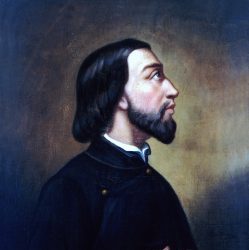

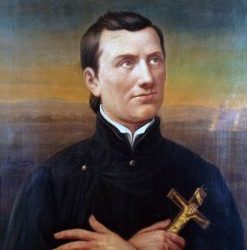
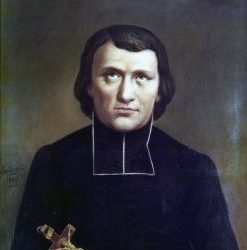

Holy Martyrs of the Paris Foreign Missions
SAINT LAURENT IMBERT
Mgr Laurent Imbert, Joseph-Marius, bishop of Capse, martyr in Korea, was born on March 23, 1796, in the farm of Bricart, in Marignane (Bouches-de-Rhône)…
SAINT JACQUES CHASTAN
CHASTAN, Jacques-Honoré (Le Ve), martyr in Korea, was born in Marcoux (Basses-Alpes) on October 7, 1803. He began his studies at Brusquet, continued in the preparatory seminary in Embrun, and finished at the seminary in Digne.
SAINT PIERRE DUMOULIN-BORIE
‘I must warn you that I will follow my vocation wherever it calls me, even to the foreign missions.’ This is what Pierre Dumoulin-Borie, born on February 20, 1808, at Beynat, in the Department of Corrèze, declared to his parents when he informed them of his intention to join Sacred Orders.
SAINT FRANÇOIS JACCARD
François Jaccard was born on September 6, 1799, at Onion, in Haute-Savoie. His parents had him, their first child, after twenty years of marriage, and saw in his birth, a “sign of the Lord”; this child would probably become a priest.
SAINT JEAN-CHARLES CORNAY
‘Allow me to go to Paris, I will stay there for at least three years and I will have all the facilities there to test my vocation, and all the means to prepare for it if it is true.’ That was how Jean-Charles Cornay, born on February 27, 1809, at Loudon (Vienne), tried to convince his mother to let him follow the Lord’s call to the Paris Foreign Missions.
SAINT JOSEPH MARCHAND
According to his colleagues, he was ‘reserved without hiding it, serious without constraint, simple and joyful without exaggeration’. His reserve, however, made him conceal a secret that he shared with only one confidant: his younger brother Jean-Baptiste who also wanted to become a priest.
SAINT FRANÇOIS-ISIDORE GAGELIN
François-Isidore Gagelin was born on May 10, 1799, at Monperreux, in Doubs. He was baptised, discreetly, by a rebel priest, on July 14. His father died when he was two years old, and his two elder sisters took care of him. At the age of five he announced his desire to become a priest.
SAINT AUGUSTIN SCHOEFFLER
‘Christians do not dethrone kings, even during times of persecution. You will learn about their loyalty when you reign one day.’
SAINT JEAN-LOUIS BONNARD
Jean-Louis Bonnard was born on March 1, 1824 and was baptised the same day in Saint-Christôt-en-Jarez church, in the Loire valley.
SAINT THÉOPHANE VENARD
Saint Therese of Lisieux’s favourite martyr, Jean-Théophane Vénard, died at the beginning of 1861, aged 31.
22 notes
·
View notes
Text
My Favorite Films and Performances of 2019
As per, I did’t get to watch everything. But these are the films that did the most for me in 2019. If it’s not on here, I either didn’t have the opportunity to see it or I just plain didn’t dig it.
TOP 5, loosely ranked. I love these deeply.

1. ONCE UPON A TIME IN HOLLYWOOD, Quentin Tarantino
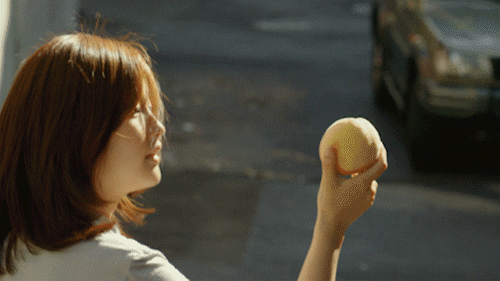
2. PARASITE, Bong Joon-ho

3. UNCUT GEMS, Josh and Benny Safdie

4. PORTRAIT OF A LADY ON FIRE, Céline Sciamma

5. MONOS, Alejandro Landes
The rest of the Top 20, in alphabetical order. I loved these.
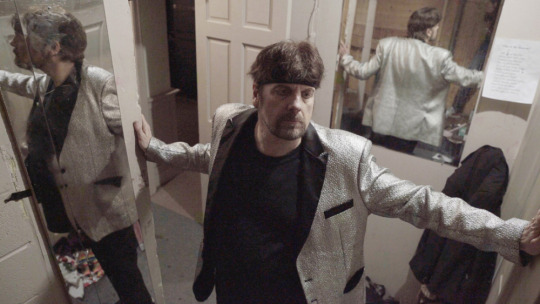
THE AMAZING JOHNATHAN DOCUMENTARY, Ben Berman

BEANPOLE, Kantemir Balagov
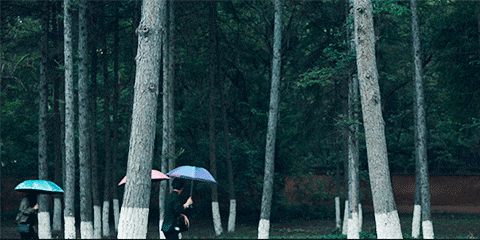
THE FAREWELL, Lulu Wang

A HIDDEN LIFE, Terrence Malick
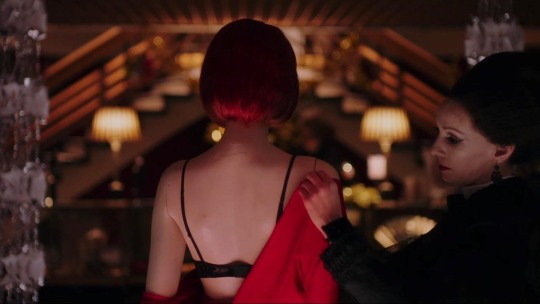
IN FABRIC, Peter Strickland

THE IRISHMAN, Martin Scorsese
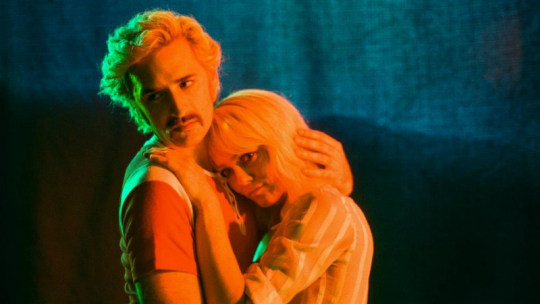
KNIFE + HEART, Yann Gonzalez
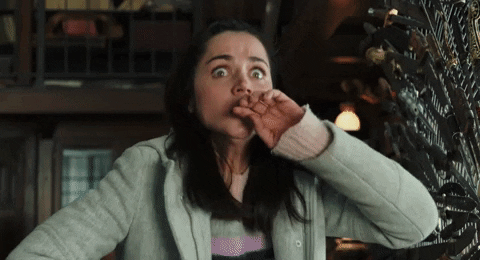
KNIVES OUT, Rian Johnson
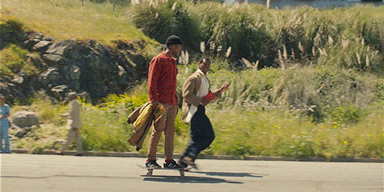
THE LAST BLACK MAN IN SAN FRANCISCO, Joe Talbot

THE LIGHTHOUSE, Robert Eggers
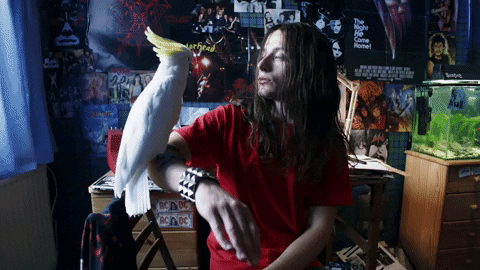
LORDS OF CHAOS, Jonas Åkerlund
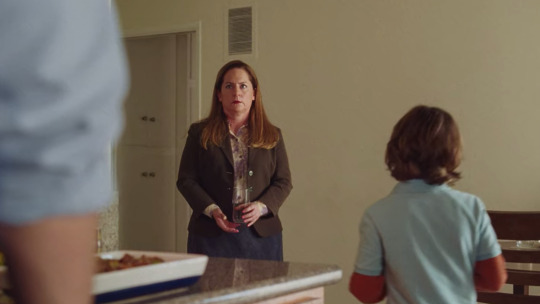
MARRIAGE STORY, Noah Baumbach
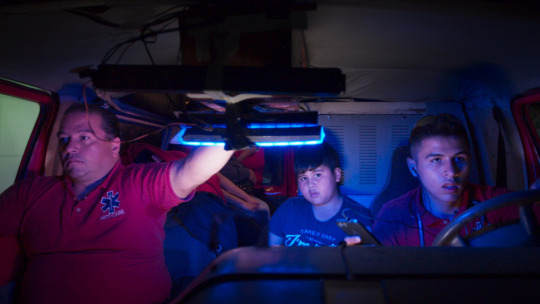
MIDNIGHT FAMILY, Luke Lorentzen

THE SOUVENIR, Joanna Hogg

TRANSIT, Christian Petzold
—————
I also enjoyed, some with reservations:
A Beautiful Day In The Neighborhood, Ad Astra, Arctic, The Art of Self-Defense, Ash Is Purest White, Atlantics, Birds of Passage, Climax, Dark Waters, The Dead Don’t Die, Diamantino, Diane, Dolemite is My Name, Downton Abbey, El Camino: A Breaking Bad Movie, Ford v Ferrari, Gloria Bell, Greta, Her Smell, High Flying Bird, High Life, Hotel By The River, Hustlers, I Lost My Body, Les Misérables, Little Women, Midsommar, The Mustang, Non-Fiction, Pain & Glory, Peterloo, Ready or Not, The Report, The Standoff at Sparrow Creek, Us, Waves, Wild Rose
And these documentaries:

Amazing Grace, Apollo 11, David Crosby: Remember My Name, The Great Hack, Hail Satan?, Honeyland, The Kingmaker, Knock Down The House, Linda Ronstadt: The Sound of My Voice, One Child Nation, Well Groomed
—————
Did anyone ask for my favorite movies of the decade? No. Will I list them now, allowing only one title per director? Yes.
Carlos, Dogtooth, Force Majeure, Green Room, Inherent Vice, Mad Max: Fury Road, Mandy, Once Upon A Time In Hollywood, Parasite, Shoplifters, The Social Network, Toni Erdmann, Under The Skin, We Need to Talk About Kevin, Wild Tales
—————
My favorite performance of the year:

Adam Sandler as Howard Ratner in Uncut Gems
—————
Dynamic Duos:

Leonardo DiCaprio as Rick Dalton & Brad Pitt as Cliff Booth in Once Upon A Time In Hollywood

Valerie Pachner as Franziska Schwaringer & August Diehl as Franz Jägerstätter in A Hidden Life

Robert Pattinson as Ephraim Winslow & Willem Dafoe as Thomas Wake in The Lighthouse
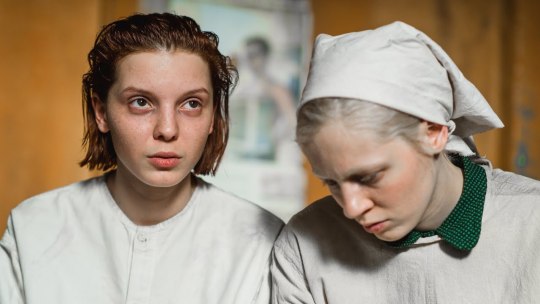
Vasilisa Perelygina as Masha & Viktoria Mironshnichenko as Iya in Beanpole
—————
Favorite Ensembles:

Climax, The Dead Don’t Die, Dolemite Is My Name, The Irishman, Knives Out, Les Misérables, Marriage Story, Monos, Once Upon A Time In Hollywood, Parasite, Peterloo, Uncut Gems, Us
—————
So many memorable performances:
Alan Alda as Bert Spitz in Marriage Story
Christian Bale as Ken Miles in Ford v Ferrari
Antonio Banderas as Salvador Mallo in Pain and Glory
Paula Beer as Marie in Transit
Annette Benning as Senator Dianne Feinstein in The Report
Juliette Binoche as Selena in Non-Fiction
Damien Bonnard as Ruiz in Les Misérables
Jessie Buckley as Rose-Lynn in Wild Rose
Sofia Buenaventura as Rambo in Monos
Tom Burke as Anthony in The Souvenir
Julie Butters as Trudi Fraser in Once Upon A Time In Hollywood
Honor Swinton Byrne as Julie in The Souvenir
Louis Cancelmi as Sally Bugs in The Irishman
Chang Hyae-jin as Chung-sook in Parasite
Cho Yeo Jeong as Park Yeon-kyo in Parasite
Ana de Armas as Marta Cabrera in Knives Out
Laura Dern as Nora Fanshaw in Marriage Story
Wayne Diamond as High Roller in Uncut Gems
Julia Fox as Julia in Uncut Gems
Kevin Garnett as Kevin Garnett in Uncut Gems
Rebecca Gayheart as Billie Booth in Once Upon A Time In Hollywood
Jon Glaser as Mark in Hustlers
Adèle Haenel as Héloïse in Portrait of a Lady on Fire
Julie Hagerty as Sandra in Marriage Story
Tim Heidecker as Josh Tyler / Tex in Us
André Holland as Ray Burke in High Flying Bird
Isabelle Huppert as Greta Hideg in Greta
Marianne Jean-Baptiste as Sheila in In Fabric
Karl Johnson as Lord Sidmouth in Peterloo
Lee Jung-eun as Gook Moon-gwang in Parasite
Martha Kelly as the Evaluator in Marriage Story
Ted Levine as John Brennan in The Report
Ray Liotta as Jay Marotta in Marriage Story
Jennifer Lopez as Ramona in Hustlers
Jonathan Majors as Montgomery Allen in The Last Black Man in San Francisco
Idina Menzel as Dinah Ratner in Uncut Gems
Noémie Merlant as Marianne in Portrait of a Lady on Fire
Fatma Mohamed as Miss Luckmoore in In Fabric
Julianne Moore as Gloria in Gloria Bell
Elisabeth Moss as Becky Something in Her Smell
Eddie Murphy as Rudy Ray Moore in Dolemite Is My Name
Julianne Nicholson as Doctora Sara Watson in Monos
Alessandro Nivola as Sensei in The Art of Self-Defense
Lupita Nyong'o as Adelaide Wilson / Red in Us
Al Pacino as Jimmy Hoffa in The Irishman and as Marvin Schwarz in Once Upon A Time In Hollywood
Joe Pesci as Russell Bufalino in The Irishman
Mary Kay Place as Diane in Diane
Florence Pugh as Dani in Midommar
Keanu Reeves as Keanu Reeves in Always Be My Maybe
Margot Robbie as Sharon Tate in Once Upon A Time In Hollywood
Franz Rogowski as Georg in Transit
Taylor Russell as Emily in Waves
Andy Serkis as Parker Wembley in Long Shot
Wesley Snipes as D'Urville Martin in Dolemite Is My Name
Song Kang-ho as Kim Ki-taek in Parasite
Tilda Swinton as Zelda Winston in The Dead Don’t Die
John Turturro as Arnold in Gloria Bell
Zhao Shuzhen as Nai Nai in The Farewell
... and Sayuri the pit bull as Brandy in Once Upon A Time In Hollywood
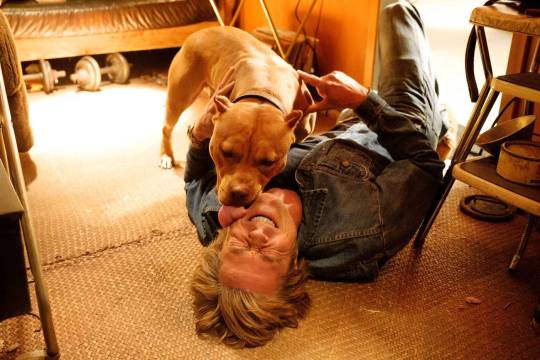
—————
Favorite older film I saw for the first time in 2019:

War and Peace, Sergei Bondarchuk, 1965
—————

THE END!
10 notes
·
View notes
Text
Inventing Impressionism - 2

Degas, Dance Foyer of the Opera at rue le Peletier (1872)
"Here are some chairs I noticed. An empty chair at the natural optical centre of Degas’s Dance Foyer of the Opera at rue le Peletier (1872), occupied by a fan and a puddle of white cloth. It is waiting – and the viewer is waiting, subliminally – for its occupant to return and claim the fan. It is reserved. Someone has bagged it. Not a circumstance you often see painted, though common enough in real life. Nor is the violinist playing. He is pausing, his bow at rest on his trouser leg. Degas has painted a pause. A thing that hasn’t been painted before. In the same picture, a dancer to the right, in the foreground, is sitting on another chair, her legs stiffly out front – ungainly yet graceful, resting. The upright back of the chair is invisible because it is under her unmanageably stiff tulle skirt, lifting the skirt up and slightly out of alignment. All her fatigue is there in the mistake, the carelessness of her plonking down."
New Statesman: How the impressionists found a new way of capturing the remarkable in everyday life
Guardian: Inventing Impressionism review – a superb exhibition in every respect
The National Gallery: Inventing Impressionism
YouTube: Inventing Impressionism | The National Gallery, London

The Galettes, 1882, Claude Monet.
Impressionism: Art and Modernity

La Grenouillère, Claude Monet, 1869
"In 1874, a group of artists called the Anonymous Society of Painters, Sculptors, Printmakers, etc. organized an exhibition in Paris that launched the movement called Impressionism. Its founding members included Claude Monet, Edgar Degas, and Camille Pissarro, among others. The group was unified only by its independence from the official annual Salon, for which a jury of artists from the Académie des Beaux-Arts selected artworks and awarded medals. The independent artists, despite their diverse approaches to painting, appeared to contemporaries as a group. While conservative critics panned their work for its unfinished, sketchlike appearance, more progressive writers praised it for its depiction of modern life. Edmond Duranty, for example, in his 1876 essay La Nouvelle Peinture (The New Painting), wrote of their depiction of contemporary subject matter in a suitably innovative style as a revolution in painting. The exhibiting collective avoided choosing a title that would imply a unified movement or school, although some of them subsequently adopted the name by which they would eventually be known, the Impressionists. Their work is recognized today for its modernity, embodied in its rejection of established styles, its incorporation of new technology and ideas, and its depiction of modern life. ..."
Metropolitan Museum of Art

Garden at Argenteuil, Edouard Manet, 1874
The Age of Impressionism

Pierre-Auguste Renoir, Venice, the Doge's Palace, 1881
"Showcasing the Clark's renowned holdings of French Impressionist paintings, this exhibition features seventy-three works of art, including works by Edgar Degas, Édouard Manet, Claude Monet, Berthe Morisot, Camille Pissarro, Pierre-Auguste Renoir, and Alfred Sisley. Also represented are Pierre Bonnard, William-Adolphe Bouguereau, Jean-Baptiste-Camille Corot, Jéan-Leon Gérôme, Jean-François Millet, and Henri de Toulouse-Lautrec, among others. The MFAH exhibition tells not only the story of Sterling and Francine Clark's devotion and passion for collecting but also of painting in nineteenth-century France, including the Orientalist works of Gérôme, Barbizon paintings of Corot and Théodore Rousseau, Impressionist masterpieces of Degas, Manet, Monet, Pissarro, Renoir, and Sisley, and Early Modern output of Bonnard and Lautrec. Portraits, landscapes, marines, still lifes, and scenes of everyday life by twenty-five artists, spanning seventy years, are on view."
The Clark
YouTube: The Age of Impressionism

Camille Pissarro, The River Oise near Pontoise, 1873
Discovering the Impressionists: Paul Durand-Ruel and the New Painting

Pont Boieldieu in Rouen, Rainy Weather, 1896, Camille Pissarro
"This extraordinary gathering of paintings reveals the story of Monet, Renoir, Degas, Manet, Pissarro, and their visionary art dealer and champion, Paul Durand-Ruel. The artists now known as the Impressionists once struggled to introduce their new style of painting to critics and the public. With Durand-Ruel, they forged an identity and moved from the margins to international fame. Recaptured in this exhibition are the often forgotten setbacks and breakthrough triumphs of Impressionism. Monet’s visions of graceful poplar trees, Renoir’s joyous dance paintings, and Pissarro’s luminous cityscapes showcase the talent recognized by Durand-Ruel. Durand-Ruel secured Impressionism’s place in history through tireless promotion across Europe and the United States—enthusiastic Americans ensured its success."
Philadelphia Museum of Art
Philadelphia Museum of Art: Featured Artists
NY Times: Paul Durand-Ruel, the Paris Dealer Who Put Impressionism on the Map
WSJ: ‘Durand-Ruel’ Impressionism Show Tours Paris, London, Philadelphia
YouTube: Discovering the Impressionists: Paul Durand Ruel at the Philadelphia Museum of Art
Undressed: The Fashion of Privacy

"Presented as a companion to the major exhibition Impressionism, Fashion, and Modernity, which investigates Impressionist artists’ expressive use of contemporary fashion in depictions of public life, this exhibition focuses on the private side of apparel—and the lack thereof. Featuring more than 120 drawings and prints, as well as select paintings, photographs, and materials from the Ryerson and Burnham Libraries, Undressed explores the connotations of informal dress and undress in intimate, personal situations."
The Art Institute of Chicago

Barbizon through Impressionism: Great French Paintings from the Clark

Camille Corot, Road by the Water, c. 1865–70.
"The international tour of French nineteenth-century paintings from the Sterling and Francine Clark Art Institute made its ninth stop at the Shanghai Museum. The Clark’s world tour has drawn more than 1.6 million visitors since it began in October 2010. Open to the public from September 18–December 1, 2013, the exhibition in Shanghai features seventy-three paintings, including works by Pierre-Auguste Renoir, Claude Monet, Edgar Degas, Édouard Manet, and Camille Pissarro, as well as those by Pierre Bonnard, Jean-Baptiste-Camille Corot, Paul Gauguin, Jean-François Millet, Alfred Sisley, Henri de Toulouse-Lautrec, William-Adolphe Bouguereau and Jean-Léon Gérôme. Visit the Masterpiece Gallery to view the works included in the exhibition."
The Clark
The Clark: Slideshows
amazon: Great French Paintings from the Clark: Barbizon through Impressionism
0 notes
Text
YOUPI C'EST REPARTI à La Nouvelle Eve POUR QUELQUES LUNDIS de cabaret!
YOUPI C’EST REPARTI à La Nouvelle Eve POUR QUELQUES LUNDIS de cabaret!
Caroline ROËLANDS a conçu ce nouveau spectacle de cabaret qui devrait faire salle comble les lundis de Décembre. photo : Dominique Plaideau Elle s’est entourée d’une bande d’amis, Patrick LAVIOSA, Denis D’ARCANGELO, Charlène DUVAL, Jacques VERZIER, Benoît ROMAIN, Sébastien MESNIL (dit le Zèbre) Tiago DO NASCIMENTO, Frédéric-Sylvain JEAN-BAPTISTE, Mathieu MOREL, François BÉRETTA, Alexandre…
View On WordPress
#Alexandre Bonstein#Benoît ROMAIN#Caroline Roëlands#Charlène DUVAL#Christine Bonnard#Denis d&039;Arcangelo#François BÉRETTA#Frédéric-Sylvain JEAN-BAPTISTE#Jacques VERZIER#Mathieu MOREL#Nicole Croisille#Pascal MARY#Patrick LAVIOSA#Sébastien MESNIL (dit le Zèbre) Tiago DO NASCIMENTO
0 notes
Link
On a plateau above the Marne River, Chaumont is a neat, understated town not far from the Champagne wine region.
Graphic designers may already know Chaumont because it’s home to an annual festival for poster design and in 2016 opened France’s only graphic art museum. The headline vision is a 19th-century railway viaduct that continues to bring Basel to Paris and is beautiful when illuminated at night. Chaumont has taken care of its history and there are many castles built on the streets that look like they have hardly changed for centuries. Discover the best things to do in Chaumont.
[toc]
1. Viaduc de Chaumont
It’s a testament to 19th-century engineering that this epic viaduct is still being used by trains more than 160 years after it was built. The structure was opened to rail traffic in 1856 and traverses the Suize Valley at a height of 52 meters and stretching out for more than half a kilometer.
There are 50 arches in total, on three tiers, which have helped the viaduct to withstand many decades of vibrations caused by trains. Cross the daytime walkway to take pictures and come back at night when the arches are illuminated by 430 colorful LEDs.
2. Musée d’Art et d’Histoire
Located in the former Palace of Earl of Champagne, this museum can be traced back to the 1790s. The small exhibition space should have a rotating art collection of some heavy artists like Paul de Vos and Charles Gussin.
You can also inspect a riveting archaeology collection, with 3,000-year-old armor, sculpture from the Renaissance tomb of Claude de Lorraine and a 17th-century altarpiece. Two more rooms uncover the Chaumont glove-making business in the 1800s and 1900s. At one time Chaumont was making more gloves than almost anywhere in France.
3. Basilique Saint-Jean-Baptiste
The main religious building of Chaumont is a lovely 13th-century basilica, located in the oldest part of town. The building was enlarged and reworked until the 1500s but if you know where to look you can identify lots of pleasing details from earlier periods.
The southern Saint-Jean portal is full of gothic carvings. The choir is a mix of brilliant gothic style and Renaissance, with beautiful stalls. One man to leave his mark on the basilica in later years was the 17th-century Chaumont-based sculptor Jean-Baptiste Bouchardon.
He crafted the pulpit, the opposing pew and the altar, which has since been moved to the Chapelle de Rosaire.
4. Museum of the Crèche
Annexed to the Museum of Art and History is an exhibition dedicated to babies’ cribs. And while that may seem like an obscure topic, the museum is equipped with some very decorative examples.
Most of these cribs come from the city of Naples and date to the 18th century, boasting incredible artistry, exotic colors and fine fabrics.
There are also traditional nativity scenes to view, made with 18th-century spun glass from Nevers, and a collection of baby Jesus sculptures made of wax, from the 1600s to the 1800s.
5. A Stroll around the Centre
The old heart of Chaumont, with stone-built mansions and monuments, looks like it could be in a period drama.
The town hall on Place de la Concorde is housed in an aristocratic neoclassical castle dating back to the 1780s, while the Hautefeuille Tour, home to the art and history museum, is the last relic of a mighty castle. The grandeur has 12 towers.
On your walk, you’ll also come across a fragment of the old town defenses, at the Tour d’Arse, which used to be an arsenal. Many turrets were fortified, and in fact, all 30 turrets were found on Chaumont street.
6. Les Silos
A graphic art-lovers dream, Les Silos is an exhibition center and library housed in a former agricultural cooperative. The building is a sight in its own way because when it was converted in the 90s the architects managed to keep the two colossal grain hoppers.
But its collections are even more thrilling since here you can see "Dutailly Legacy". This is a library of 5,000 original posters from the turn of the 20th century by artists like Toulouse-Lautrec and Pierre Bonnard.
Les Silos also has about 400 medieval manuscripts, thousands of historical maps and, strangely enough, 16,000 brands of rum appeared in 2010. These are displayed for short periods, so check in to see what’s on when you’re in Chaumont.
7. Festival International de l’Affiche et du Graphisme
The donation of 5,000 posters by Gustave Dutailly 100 years ago has helped Chaumont become a reference point for poster art and graphic design. Launched in 1990, this annual festival, held at the Centre National du Graphisme in Chaumont celebrates the best of this discipline each year.
There’s an international award for best poster, and an annual design competition for up-and-coming designers to come up with a poster based on a specific theme. In 2017 the festival will take place for two weeks starting on 12 May.
8. Le Signe
After hosting the festival for 25 years Chaumont needed a gallery to display the many pieces of cutting-edge design submitted at this time.
So in 2010 plans were made to build a stylish exhibition center, which was finally inaugurated in October 2016. The building is composed of glass and large sheets of stone, 12 cm thick and juxtaposed at different angles.
Le Signe is the first attraction in France dedicated solely to graphic design. There are 45,000 posters in its collection, including many from the Dutailly Heritage.
9. Square Philippe Lebon
Opposite Le Signe is a large square with tall trees, lawns and flower beds. Stop here to rest your feet or take a picnic in the summer. At the terrace, you can admire the palace of the Earl of Champagne, a medieval structure containing the Museum of Art and History.
The square centers on a statue of Philippe Lebon, and while his name might not ring a bell this 18th-century scientist is credited with inventing the gaslight. He was born in 1767, a short distance north of Chaumont in Brachay.
The original statue in his honor was made of bronze but was melted down by the Vichy regime in the war, to be replaced later with a stone copy.
10. Mémorial Charles-de-Gaulle
Possibly the most important figure in 20th-century France is commemorated at this memorial a few kilometers northwest of Chaumont. And you will discover this place from a distance as far as 1972, a huge Lorraine Cross has been installed here.
The visitor center was given a big makeover in 2008. This is now a multi-sensory gallery, resonating with audio from his speeches, archive footage and large models recreating Second World War battle scenes.
You’ll come away with a sense of de Gaulle as an individual, but also understanding the world events unfolding during his career.
More ideals for you: Top 10 things to do in Cayenne
From : https://wikitopx.com/travel/top-10-things-to-do-in-chaumont-708075.html
0 notes
Video
youtube
Edgard - Varèse Ionisation (1931), pour 13 percussions dont 1 piano Editions Ricordi Solistes de l'Ensemble intercontemporain Elèves du Conservatoire National Supérieur de Musique et de Danse de Paris Susanna Mälkki, direction Percussions : Gilles DUROT, Samuel FAVRE, Victor HANNA (Ensemble intercontemporain) / Matthieu DRAUX, Adelaide FERRIERE, Jean-Baptiste BONNARD, Noam BIERSTONE, Christophe DRELICH, Julien LACROUZADE, Thibault LEPRI, Sylvain BORREDON, Othman LOUATI Piano : Sébastien VICHARD
1 note
·
View note
Video
“Solitude à Deux”
Par Manon Huré - avec Chloé Bonnard et Jean Baptiste Brunet
Une jeune fille tombe en dépression après avoir perdue son petit ami, des événements étranges vont se dérouler...
0 notes
Video
vimeo
Trio Xenakis – peaux, from Xenakis révolution. Le bâtisseur du son, (documentary/biography, 2022, 56', in French w/ French, Italian, English, Spanish, and Polish sub, and German dubbed), Directed by Stéphane Ghez, Arte / Cinétévé, 2022. Trio Xenakis: Adélaïde Ferrière, Emmanuel Jacquet, Rodolphe Théry, and Jean-Baptiste Bonnard, Othman Louati, Emmanuel Curt
#art#music#performance#video#documentary#trio xenakis#collectif xenakis#adélaïde ferrière#emmanuel jacquet#rodolphe théry#jean baptiste bonnard#othman louati#emmanuel curt#iannis xenakis#stéphane ghez#vivian daval#denis gaubert#lionel delebarre#clément tranchant#cinétévé#2020s
17 notes
·
View notes
Text
Hyperallergic: Hard Looking: Proust and Gauguin on Art
Jean-Baptiste-Siméon Chardin, “The Ray” (1728), oil on canvas, 114 x
146 cm, Musée du Louvre, Paris (all images via wga.hu unless otherwise noted)
Don’t you wish that every piece of art criticism could begin with a line as specific and disarming as “Take a young man of modest means and artistic inclinations, sitting in his dining room at that banal, dismal moment when the midday meal has just finished and the table is only partly cleared”?
The book in question (photo by the author for Hyperallergic)
This is how the 24-year-old Marcel Proust opens Chardin and Rembrandt, an unfinished essay (so unfinished that it ends in mid-sentence) written around 1895 and newly published by David Zwirner Books as one of the first two entries in its ekphrasis series, which, according to the Zwirner website, is “specially dedicated to publishing rare, out-of-print, and newly commissioned texts as accessible paperback volumes.”
The books in the series seem designed to slip into your back pocket — slim, spartan, and compact, sporting uniform covers consisting solely of typeface in black or white, with a matching horizontal bar across the top, against a solid color. The other title is Paul Gauguin’s Racontars de rapin, here translated as Ramblings of a Wannabe Painter, but more on that later.
Proust’s essay, gracefully translated by Jennie Feldman, takes the form of an imaginary journey to the Louvre, “through the La Caze room and the gallery of eighteenth-century French painters,” where the author projects himself as a docent attempting to open the eyes of the imaginary “young man of modest means and artistic inclinations” to the work of Jean-Baptiste-Siméon Chardin, whose canvases transform everyday life — the source of the young man’s “unease and ennui” — into visions of transcendent beauty.
The tactic Proust deploys is a succession of extraordinarily close readings of the paintings, in language so luminous that the text easily embodies the series’ title, ekphrasis, or the translation of visual art into poetry, often through objective description. At first, Proust adopts a metaphysical bent echoing Wordsworth’s famous observation “that poetry […] takes its origin from emotion recollected in tranquility”:
The pleasure you take in [Chardin’s] painting of a room where someone is sewing, or of a pantry, a kitchen, a sideboard, is the same pleasure—seized in passion, detached from the moment, deepened, eternalized—that he took in seeing a sideboard, a kitchen, a pantry, or a room where someone is sewing.
The seductive symmetry of that sentence is just a hint of the verbal pleasures in this book, but the insights are also striking, such as Proust’s admonition to the young man that the above-mentioned “feeling of pleasure was already there in you, unconsciously, at the sight of a humble existence and scenes of still life, otherwise it would not have arisen with you when Chardin, in his brilliant, compelling language, happened to summon it.”
These lines, found on the third page of a 14-page essay, set the tone of the piece, which is not that of a lecture-from-on-high but of a looking-together with a precocious motormouth. The descriptions come fast and furious, with a parade of similes bordering on the overripe, though once in a while one will flash by and stop you in your tracks, such as his account of a partially filleted ray, “tinted with red blood, blue nerves, and white muscle, like the nave of a polychrome cathedral.”
Rembrandt Harmenszoon van Rijn, “Old Man in an Interior with Winding
Staircase,” also called ““The Philosopher in Mediation” (1632), oil on
panel, 29 x 33 cm, Musée du Louvre, Paris
Twelve pages on, the topic abruptly switches to paintings by Rembrandt (“The Philosopher in Mediation,” 1632, and “The Good Samaritan,” c.1650, which was attributed to Rembrandt at the time but is now considered the work of Constantijn Daniel van Renesse) before the essay abruptly ends two pages later. Proust may have intended the section on Rembrandt to have been much longer, but there is no evidence either way. What is manifest, however, is his desire to present Rembrandt as a qualitatively different painter from Chardin. After extolling at length Chardin’s loving embrace of observed reality, he takes a startling leap:
With Rembrandt, reality itself will be overtaken. […] We shall see that objects in themselves are nothing, being hollow orbits whose light is the play of expression […]
In his Afterword, the appropriately named scholar Alain Madeleine-Perdrillat writes that in “the unexpected passage on Rembrandt […] there is a departure that undermines what has come before and may explain why the essay stops short: instead of the object, light itself is seen as the true ‘upholder’ of beauty; the author’s thinking thus moves to the dematerialization of beauty,” and thus enters “the subjective realm [which] will become the author’s chief preoccupation in In Search of Lost Time.”
And it is just this subjectivity, the acknowledgement that art often lies beyond the scope of language, that feels so contemporary. In a remarkable prefiguration of the Barnett Newman quip, “Aesthetics is to artists as ornithology is to birds,” Proust compares a painter listening to “men of letters” talk about art to the astonishment of “a woman who has just given birth to hear a gynecologist describe the physiological process that she, with mysterious strength, has carried through without knowing its nature.”
That new mother would find a kindred spirit in Paul Gauguin, who uses the term “literati,” repeatedly, as a slur. He wrote his Racontars de rapin in 1902, the year before he died, while living in French Polynesia. Donatien Grau, the essay’s editor and translator, tells us in his introduction (“The Last Words of the First Modern Artist”) that “rapin” means “apprentice painter, a term Gauguin uses ironically here.” But “apprentice” implies the intensive acquisition of a skill, while the wince-inducing anachronism “wannabe” connotes wishful thinking and a distinct lack of ambition. Was Gauguin referring to himself, as Grau suggests, “as a striver who has not yet made it,” or as a painter whose ambition exceeded the limits of his own lifetime, ars longa vita brevis?
Paul Gauguin, “Self-Portrait” (1889), oil on wood, 79 x 51 cm,
National Gallery of Art, Washington
That’s my only quibble. The translation otherwise brings the flamboyant, abrasive, and highly distractible spirit of Gauguin roaring back to life. A sizable dollop of the text, truth be told, is given over to fin de siècle score-settling, mostly at the expense of critics and academicians, but it is nonetheless a surprise to encounter the Wild One’s sentimental defense of stodgy old Jean-Auguste-Dominique Ingres, or his praise of Camille Pissarro as “a virgin who had many children but remained a virgin despite the seductions of money and power,” or his two-line epigrammatic (if not gnomic) endorsement of Paul Cézanne:
Apples, Rembrandt?
Yes, Rembrandt, apples.
You would think, in light of his fierce engagement with Parisian art world politics, that Gauguin might have left France but France never left him. He hardly mentions his exotic surroundings, except for two memorable moments, one a brief interview with an unreconstructed cannibal, and the other a chance meeting with a blind madwoman in the forest, which left him with an alarming sense of his own otherness, even if its significance doesn’t entirely penetrate his mental shield of Western cultural assumptions.
His foremost concern in writing Racontars de rapin, however, is to enshrine imagination and truth-telling as artistic lodestars, rather than technical finesse and material polish. As Grau points out, Gauguin used “his individuality as an artist to challenge conventions and make art a space for controversy.”
He consistently skewers the Parisian market’s number-one darling at the time, William-Adolphe Bouguereau, and tirelessly promotes forward-thinking artists. And for those who traffic in historical relativism, although Gauguin’s world has long since vanished, the artists he supported in his day are the same ones we turn to more than a century later. At the end of the essay, he offers a summary of “the work of the second half of the nineteenth century, [mentioning] a few names among the most important,” and goes on to list everyone from Corot and Courbet to Morisot and Cassatt to Seurat, Bonnard, and van Gogh. Of the 41 artists he cites, 28 are household names and 13 are not.
He concludes his list with, “Many others I forgot,” but quickly acknowledges that there are many more, “arisen since I left [France], whom I don’t know.” And by 1902, there were quite a lot of them.
Gauguin’s art furthered the dematerialization of beauty that Proust discerned in Rembrandt’s use of light by freeing color from form and drawing from realism. His victory lap at the end of the book, which he takes in honor of his fellow avant-gardists, feels deserved, as he declares in his closing words, “most importantly, in recent times, [we] have created freedom for the visual arts. It’s time for me to send you my regards.”
Chardin and Rembrandt by Marcel Proust and Ramblings of a Wannabe Painter by Paul Gauguin are published by David Zwirner Books.
The post Hard Looking: Proust and Gauguin on Art appeared first on Hyperallergic.
from Hyperallergic http://ift.tt/2j2eIWb
via IFTTT
0 notes